Saving a 1790s Dress
Within the Maryland Historical Society’s costume archives, certain garments are accessioned into the “study collection.” Usually artifacts within this collection have serious alteration issues, missing pieces, or need of conservation. As implied by the name, garments within the study collection were open to the public for interpretation and analysis. Recently, the costume team took a road trip and visited the Fashion Archives and Museum of Shippensburg University for conservation lessons provided by the museum’s director, Dr. Karin Bohleke.
Because curators created this collection for people to practice with textiles, we picked various pieces for conservation lessons and consultation. After reading Pride & Prejudice recently, I’ll admit that I’ve become obsessed with anything early 1800s, so naturally I pulled every study piece that relatively fit within this time frame. One such piece was a printed linen dress, which Karin dated to the 1790s rather than early 1800s. When analyzing the dress to decide on a conservation procedure, the most noticeable issue was the fact that the textile appeared shredded. First glances can be deceiving, however, because although the tears are numerous, all edges matched together perfectly. These areas of loss in the textile occurred only where the brown flower stems decorated the linen as a result of dye rot. Fortunately, the damage was contained to the areas dyed brown and did not spread.
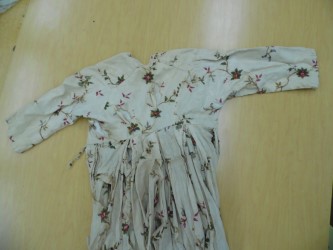 |
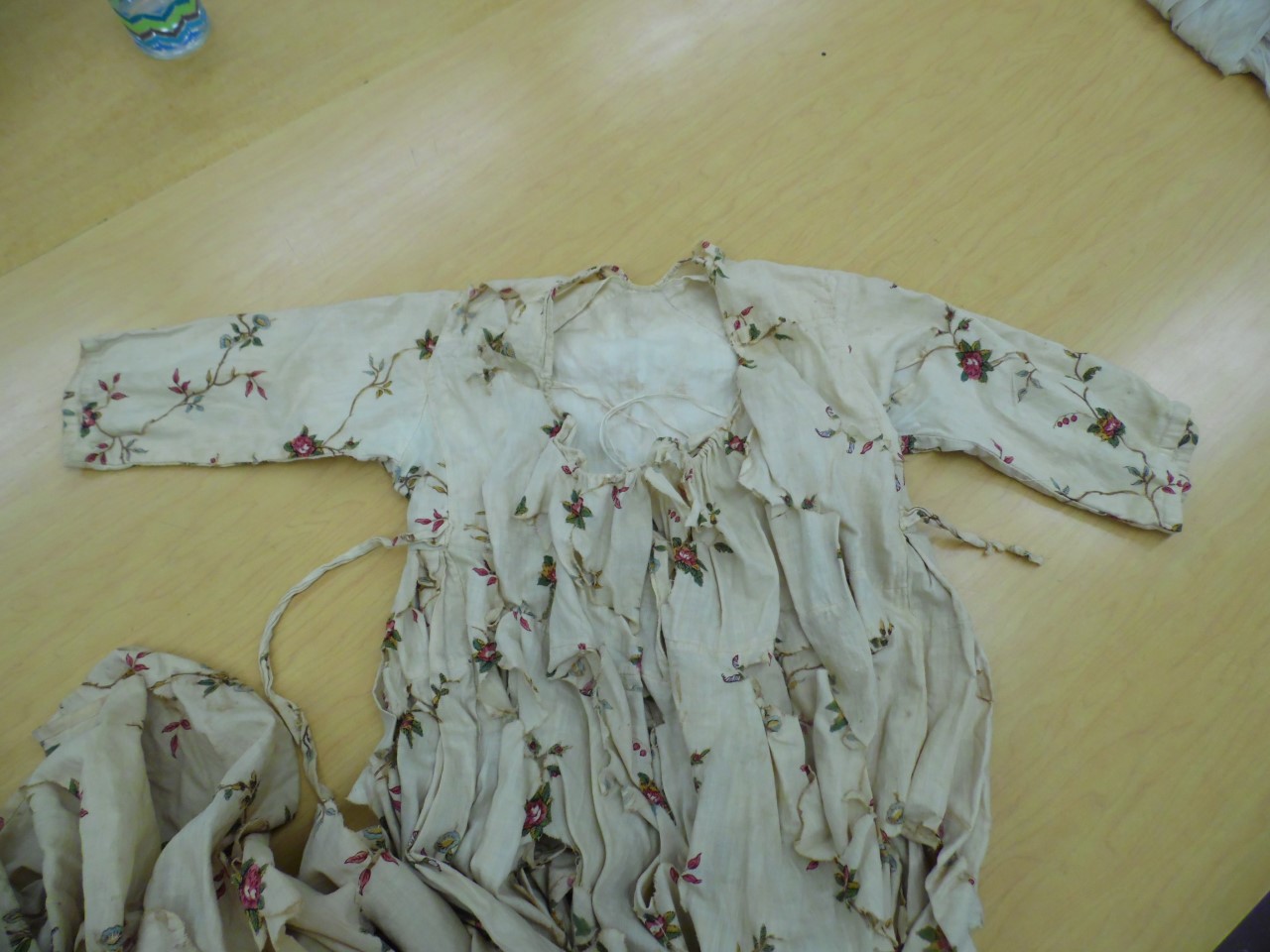 |
|
Partial back view of dress. Due to the fragile condition of the dress and the risk of worsening the tears, we could only take photographs that showed a small portion of the dress. 1949.17.1 Gift of Charlotte Murdoch Jamieson |
Partial front view of dress. |
This textile’s pattern was created via the process of block printing. As Susan Greene described in her book Wearable Prints 1760-1860, wood-block design elements appeared flat since the process did not allow graduated shades or tones. As a result, dyers layered colors in a separate imprint, which increased the textile’s value, and the museum’s 1790s dress features this technique.
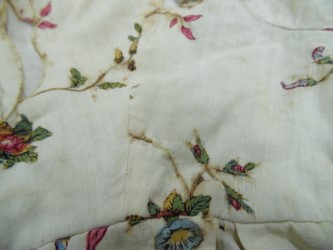 |
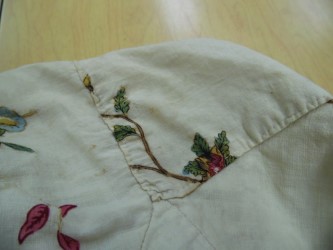 |
| Detail photograph of dress's print. | Detail photograph of dress's print. |
When creating a mixture to create the brown seen on this dress's linen, the mixers added iron. As the years progressed, the iron began to rust, which is why the textile began to rot.
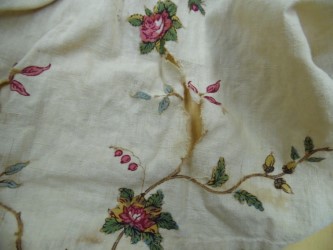 |
|
Example of the brown dye rotting away and creating an area of loss. |
While conserving this textile is time-consuming and meticulous work, this restoration is rather straight-forward and easily accomplished with a pair of steady hands and patience. Because the brown stemming embellishment has rotted away in various areas, the edges cannot be simply sewn together or else it will lose its original character and intended pattern. As a result, when we conserve this piece we will use a light brown cotton or linen that mimics the weave and weight of the textile. We will use these as patches to back the tears and recreate the flora to bring this dress back to life. Once the restoration begins this fall, look for photographs of our progress!

